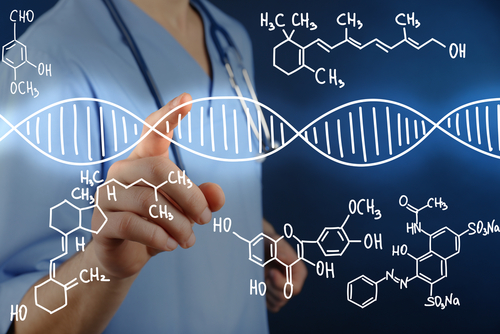A first-of-its-kind pig model of phenylketonuria (PKU) has been developed that could be useful in advancing potential disease treatments, including gene therapies.
The model was described in the study “Development of a porcine model of phenylketonuria with a humanized R408W mutation for gene editing,” published in PLOS One.
PKU is caused by mutations in the PAH gene, which encodes an enzyme of the same name that is necessary to break down an amino acid called phenylalanine. The lack of a properly working PAH enzyme causes phenylalanine to build up in the body.
Well-established mouse models of PKU exist, but models in larger animals are lacking. Such models are important in understanding human disease, since they can more closely recapitulate human biology than do rodents like mice.
A team of researchers in the U.S. developed a pig model of PKU. In a biological sense, pigs are very similar to people and, as such, can be useful models of human disease.
Using cloning technologies, the researchers generated pigs with a specific mutation in the PAH gene called R408W. This mutation is present in 40% to 70% of people with PKU, depending on characteristics like ethnic background.
Biochemical tests demonstrated that the pigs had normal levels of the PAH enzyme. However, the enzyme itself was not functional, similar to what occurs in human disease, the researchers reported.
Conceptually, a model with this mutation could be used to test a variety of treatments, such as dietary modifications, supplements, probiotics, and medications.
Modern technologies have also raised the possibility of gene therapies for PKU. Broadly, the aim of this kind of gene therapy is to deliver a non-mutated version of the PAH gene to cells, allowing the body to make its own PAH enzyme.
In some platforms for gene therapy — most notably, gene editing via CRISPR/Cas-9 — the exact sequence of a gene is crucial to the therapy.
While the pig and human versions of the PAH gene are very similar, some differences between the two could hamper the activity of a potential gene therapy. As such, the researchers also introduced several additional mutations in their pig model to generate a “humanized” PAH gene — that is, a version of the gene with the exact same sequence as the human gene around the R408W mutation.
“To our knowledge, this is the first large animal model to both mimic the disease phenotype, but also model the precise local genotype [gene sequence] of a common disease allele [mutation],” the researchers wrote.
As a proof-of-concept experiment, they then used CRISPR/Cas-9 to edit out the mutation in skin cells from the pigs. The approach reduced the presence of the R408W mutation in cells by 50%, indicating a high efficiency.
According to the researchers, this pig model may be useful for the development of PKU therapies, and for testing and refining different types of gene therapies.
“This pig model of PKU provides a powerful new tool for development of all classes of therapeutic candidates to treat or cure PKU, as well as unique value for proof-of-concept studies for in vivo human gene editing platforms in the context of this humanized PKU allele,” the researchers concluded.

